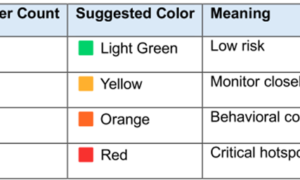Navigating marketing can be daunting, but it’s crucial for business growth. Focus on strategies that align with your goals to drive customer acquisition and retention. Success lies in understanding your audience and delivering what resonates with them.
Aim to create a strong value proposition that stands out. Use data-driven decisions and tailor your message to your target audience. Incorporate digital marketing, social media, and SEO to broaden your reach.
Your marketing strategy should be flexible and adapt to new trends and technologies, ensuring you consistently deliver engaging, relevant content.
Understanding Your Market
Knowing your market involves grasping who your ideal customers are, observing what your competitors are doing, and staying informed about market trends. By mastering these areas, you can position your business strategically and achieve better growth.
Target Audience Identification
Identifying your target audience is crucial. To do this effectively, create detailed buyer personas that represent your ideal customers. Consider factors like age, gender, income level, interests, and purchasing behavior.
Use surveys and social media analytics to gather more insights about your audience. This data helps in tailoring your marketing messages to resonate with potential customers.
Competitor Analysis
Competitor analysis evaluates how rivals function in the market. Identify key competitors and use tools like SEMrush or SpyFu to assess their strategies, focusing on pricing, products, and customer service strengths and weaknesses.
This helps you find differentiation opportunities and learn from their successes, enabling informed decisions that enhance your competitive edge.
Market Trends
Staying updated on market trends helps you anticipate changes and adapt strategies effectively. Regularly engaging with industry publications, webinars, and networking events keeps you informed about technological advances and shifts in consumer behavior.
Using tools like Google Trends and social media analytics provides insights into emerging trends. By observing changes in customer preferences and adjusting strategies accordingly, your business stays relevant and competitive, growing alongside market evolution.
Building Strong Brand Identity
Creating a strong brand identity is essential for business growth. It involves crafting a narrative that resonates, visual elements that capture attention, and ensuring your brand voice remains consistent across platforms.
Creating a Compelling Brand Story
Your brand story should connect emotionally with your audience. Start by identifying the values and mission your company stands for. Share anecdotes that highlight those values.
Encourage feedback from your audience. This makes them feel part of the story and invested in your brand’s success. A compelling story can transform casual observers into loyal customers.
Visual Brand Elements
Visuals are the first impression of your brand, so they should be memorable. Utilize colors, logos, and fonts that reflect your business’s personality.
Consistency in visual elements, like your logo and color palette, enhances recognition. Visual elements should align with your brand story’s tone and message.
Keep it simple. Overly complicated designs can confuse and distract from the message. Simplicity ensures your visuals are easily recognizable and impactful.
Brand Consistency Across Channels
Maintaining consistency across all channels reinforces your brand identity. Ensure that your messaging, visuals, and tone are uniform on social media, your website, and in marketing materials.
Develop clear brand guidelines to assist content creators. This includes voice and tone, preferred styles, and core values. Regular audits can help spot inconsistencies.
Engage with your audience in a familiar way across platforms. Consistency helps build trust and solidifies your brand’s presence in your audience’s minds.
Leveraging Digital Marketing
Digital marketing offers a diverse set of tools that can significantly drive business growth. Focusing your efforts on content marketing, social media strategy, SEO, email marketing, and PPC advertising will create a robust framework for reaching your target audience more effectively.
Content Marketing
Content marketing focuses on creating valuable material to attract and engage your audience. It’s not just about promoting products, but building relationships through informative content like blogs, videos, and infographics that establish credibility and answer audience questions.
Keep your content fresh with regular updates. Research topics your audience cares about and ensure consistency in messaging and distribution. Engaging, relevant content encourages sharing and helps expand your reach organically.
Social Media Strategy
Social media is key for connecting with your audience. Each platform serves different purposes—Instagram for visuals, Twitter for updates, and LinkedIn for networking. Tailor your content based on where your audience spends time.
Focus on interactive posts like polls, quizzes, and live events to boost engagement. Responding quickly to comments fosters community. Track metrics like engagement rates and reach to refine your strategy.
Search Engine Optimization (SEO)
SEO boosts your website’s visibility on search engines to increase organic traffic. It involves optimizing site structure, content, and links while using targeted keywords based on customer search behavior.
Strategically placing these keywords helps attract the right audience. Ensure your site is fast, mobile-friendly, and technically sound for better rankings. Quality content that answers user questions is highly valued by search engines.
Email Marketing
Email marketing enables direct communication with your audience. Personalization and segmentation based on user behavior deliver relevant content, strengthening connections and boosting conversions.
Effective subject lines and calls to action increase open rates. Testing different formats helps identify what works best. Automated workflows, like welcome and follow-up emails, sustain engagement efficiently.
Pay-Per-Click (PPC) Advertising
PPC advertising allows precise audience targeting based on demographics, interests, and behaviors. Platforms like Google Ads and Facebook offer flexible budgeting and targeting. Clear campaign objectives help measure success and guide optimization.
Effective PPC requires constant analysis and adjustments, such as tweaking ad copy or testing formats. Its real-time insights enable rapid changes, maximizing campaign impact.
Go High Level Consultant (GHL)
Integrating Go High Level (GHL) into your marketing strategy can streamline your efforts and drive better results. GHL is a comprehensive platform that helps manage leads, automate marketing tasks, and optimize sales funnels.
Jason, a Go High Level consultant, can guide you towards optimized business growth by tailoring the platform’s features to meet your specific needs. Whether you need help setting up workflows, managing customer interactions, or boosting your lead generation strategy, a GHL consultant can ensure you get the most out of this powerful tool.
Evaluating and Improving Performance
Improving performance is crucial for expanding your business. This involves monitoring essential metrics, experimenting with strategies through A/B testing, and analyzing sales conversion rates. Each method is integral to understanding what works best for your growth.
Metrics and Key Performance Indicators (KPIs)
Identifying KPIs that align with your business goals is essential for measuring marketing success. Key metrics like customer acquisition cost, lifetime value, ROI, and website traffic help identify which strategies are effective.
Regularly reviewing these KPIs keeps you on track. Use charts and graphs to simplify analysis, allowing for quick adjustments and informed decisions based on trends.
A/B Testing
A/B testing is an effective method for comparing two versions of a marketing element, such as email subject lines or landing pages, to determine which performs better. Start with a clear hypothesis and alter only one element at a time for accurate results.
Once you gather enough data, analyze which version achieved higher engagement or conversions, and implement the winning option as a best practice. Continuous testing enables you to adapt to changing market conditions and optimize your strategies effectively.
Sales Conversion Rates
Monitoring sales conversion rates measures the effectiveness of your sales funnel, showing how well your business turns leads into paying customers. Calculate conversion rates by dividing the number of conversions by total visitors and multiplying by 100.
Low rates may signal issues with your marketing tactics or sales process. Analyze each stage to identify improvements, such as optimizing landing pages, streamlining checkouts, or refining calls to action. Enhancing these areas can boost conversion rates and drive business growth.
Conclusion
An effective marketing strategy is essential for business growth. By understanding your market, building a strong brand identity, and leveraging digital channels, you can effectively engage your target audience. Consistency across platforms, along with valuable content, helps build trust and visibility.
Using tools like Go High Level (GHL) can optimize your marketing efforts. With support from a consultant like Jason, you can streamline workflows, enhance lead management, and boost sales.
Regular performance evaluation is key. Analyze metrics, test strategies, and gather feedback to refine your approach. Stay adaptable and aligned with trends for sustained success.



































